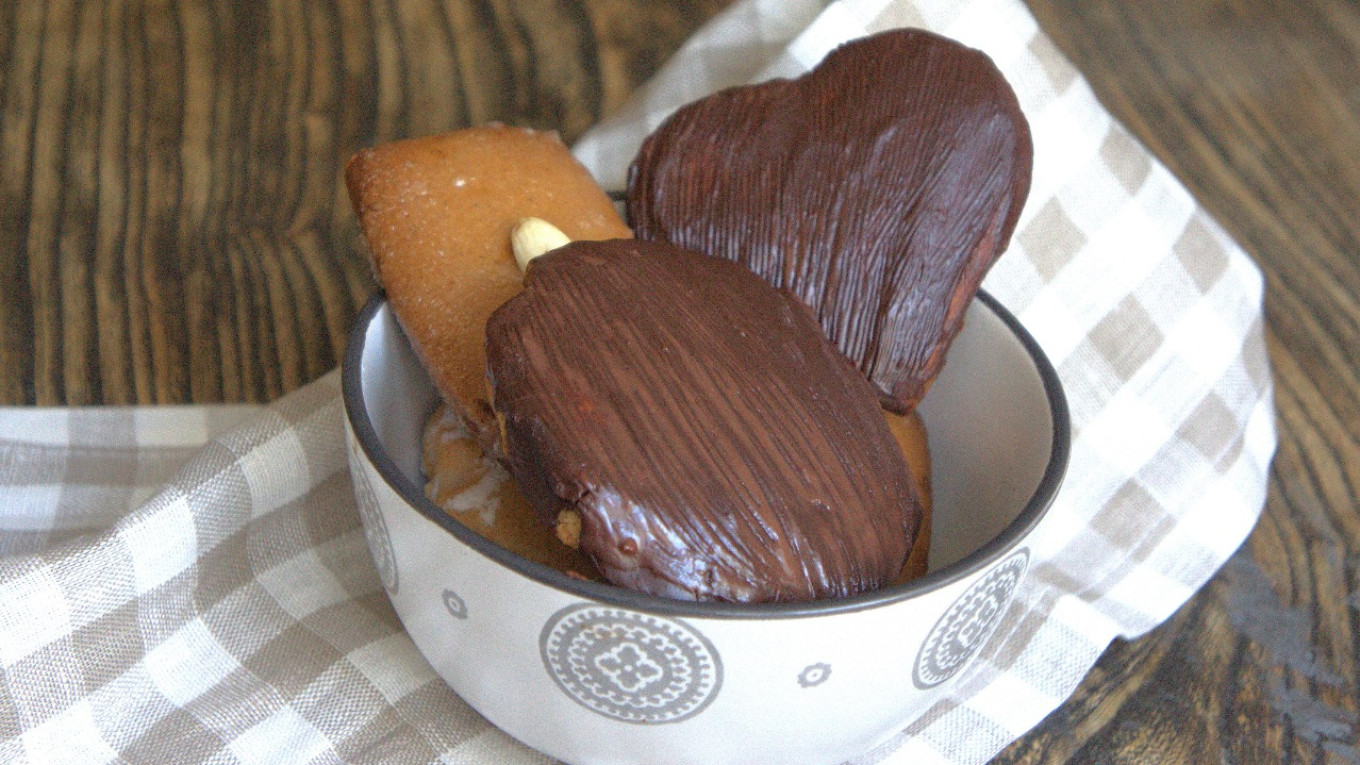Today if you ask kids in Russia if they want a chocolate bar, they will immediately think you mean a Mars bar or Snickers or another kind of foreign candy bar. Many of these candies have been produced since the 1930s and are famous all over the world.
While that’s true, before the 1917 Revolution Russia also made chocolate bars, too.
But before we go any further, we ought to define what exactly we mean by a “chocolate bar.” Chocolate bars all have a filling — a wafer, nuts, caramel or other candy — and are covered with with chocolate glaze. This kind of candy bar has been made in Russia since the early 1900s.

For example, the catalog of the Maurice Conradi Steam Factory (Moscow, 1901) advertised “Baton à la crème” and chocolate “sausages” (weighing 100 g/3.5 oz each) and even cream filled “chocolate cigars.” The cigars were 18 pieces per pound, which means that each weighed 25 g/.88 oz. This is slightly smaller than today's chocolate bars, which weigh 40-50 g/1.4-1.7 oz. But the “sausage” weighed twice as much.
Are you puzzled by the name “Conradi Steam Factor?” This was the standard name for food industries in those years because they were powered by steam engines. The Conradi company was very proud of its two steam engines. Sadly, its owners suffered tragic fates. After the 1917 Revolution, the company was nationalized, and its owner at the time, Victor Eduard Conradi, and his relatives were arrested and later executed by the Bolsheviks.
The factory was closed and re-profiled. But the chocolate cars and candies didn't disappear. In fact, to the contrary, during the Soviet period the pre-revolutionary assortment was expanded. In 1927 the price list for Mosselprom advertised many kinds of chocolate bars and similar products.
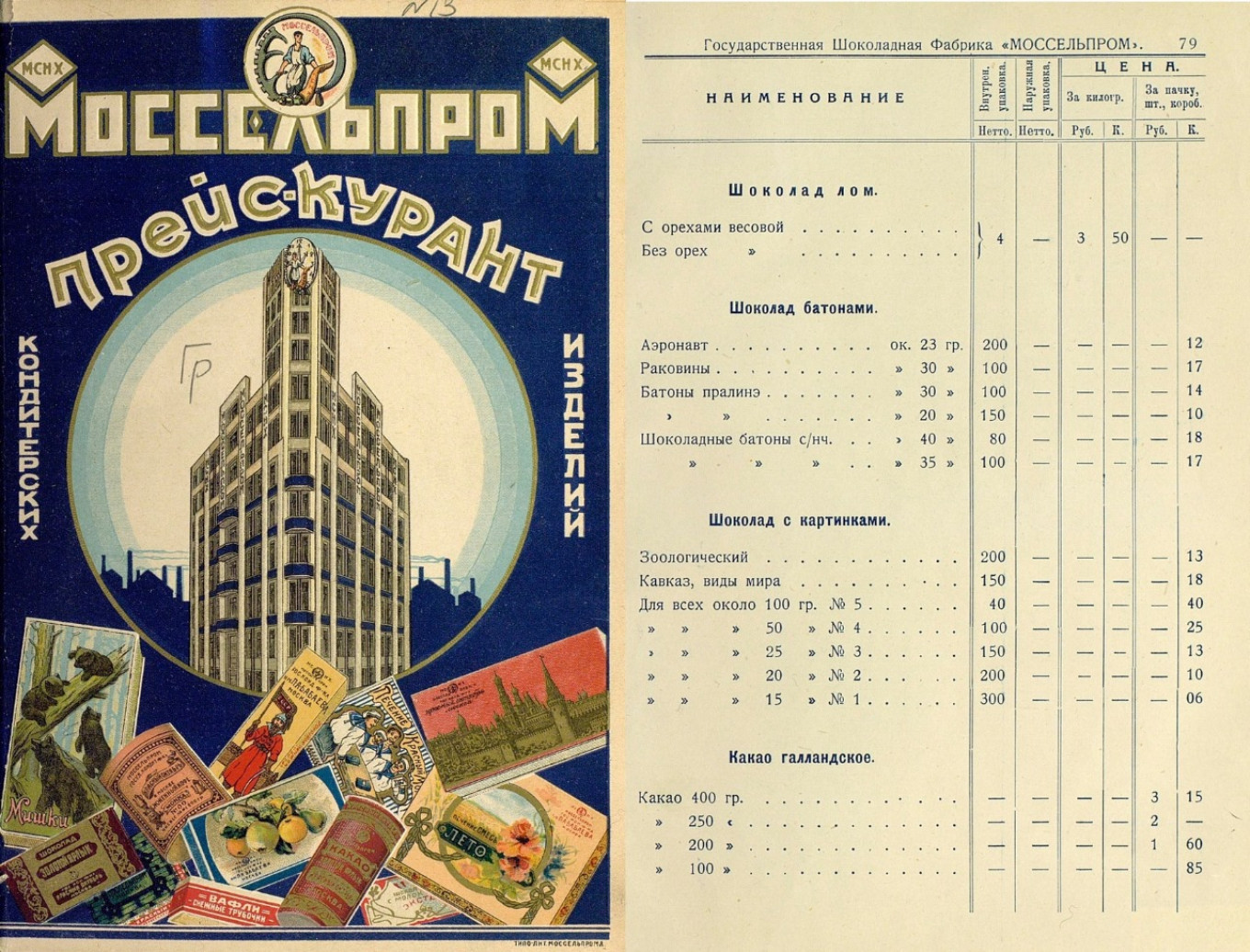
The Mosselprom list of products included International chocolate bars (30 g/1 oz for 10 kopecks), Extra chocolate bars (3 rubles per kg), Glacé and Goose gingerbread bars in chocolate (1 rub 30 kopecks per kg), and chocolate bars with filling (40 g/1.4 oz for 18 kopecks). As you can see, both in weight and composition these are almost the exact analogs of today's products.
And in 1935, a real miracle appeared on the Soviet shelves: Gulliver chocolate bars. They were gigantic — five times bigger than the standard-sized Bear of the North candies. Gulliver candies were basically a chocolate covered cookie made with a wafer, roasted hazel nuts, cocoa butter, vanilla, grated cocoa, powdered sugar and chocolate glaze. Doesn’t that sound a bit like a Snickers bar?
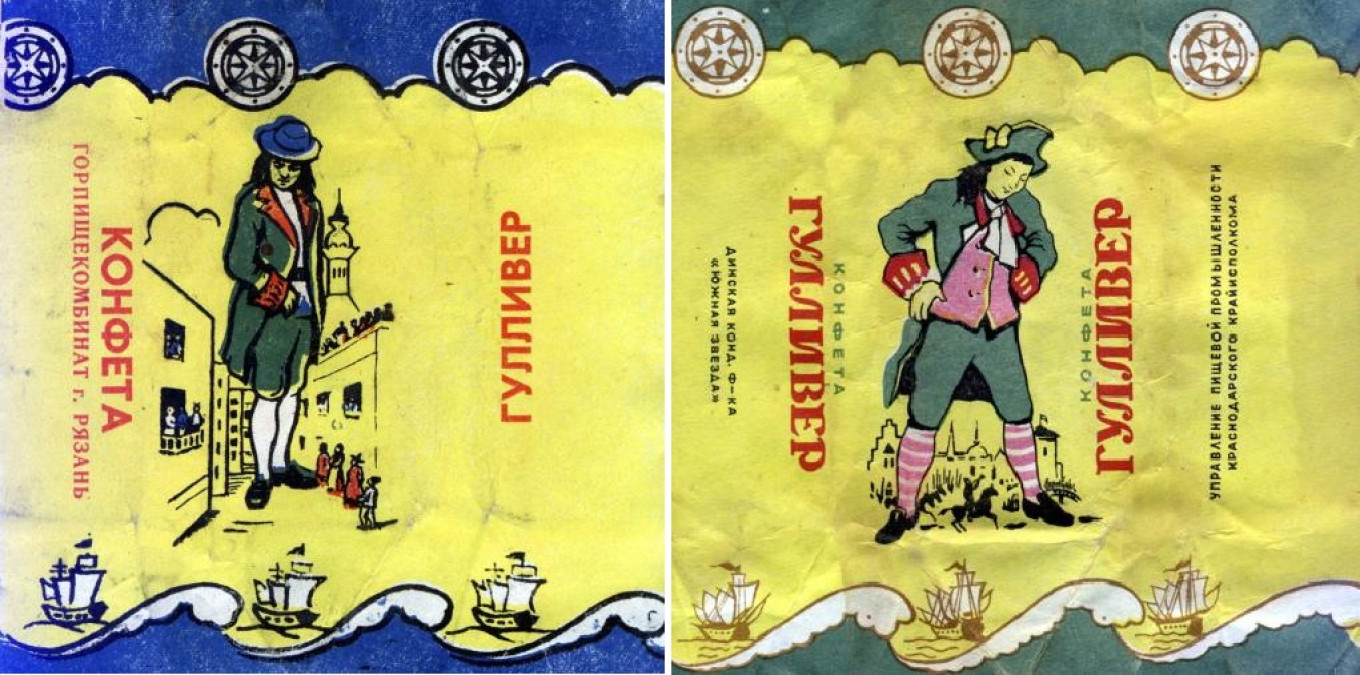
Gulliver was one of the most expensive candies in the Soviet Union. It cost 7.70 rubles per kg. For comparison, the beloved Splayfooted Bear candy cost 6.50 rubles and Karakum was only 5.60 rubles.
In the 1960s specialists at the Babaev State Confectionary Factory in Moscow developed another original product that was something like a cross between a chocolate bar and a candy bar. The Babaevsky bar was a hard chocolate “case” with a delicious filling of liquid chocolate or creamy fondant. Soon other factories in the Soviet Union also mastered this new kind of candy. But people who remember all those candies say that the Babaevsky bars were the best. And they can still be bought today.
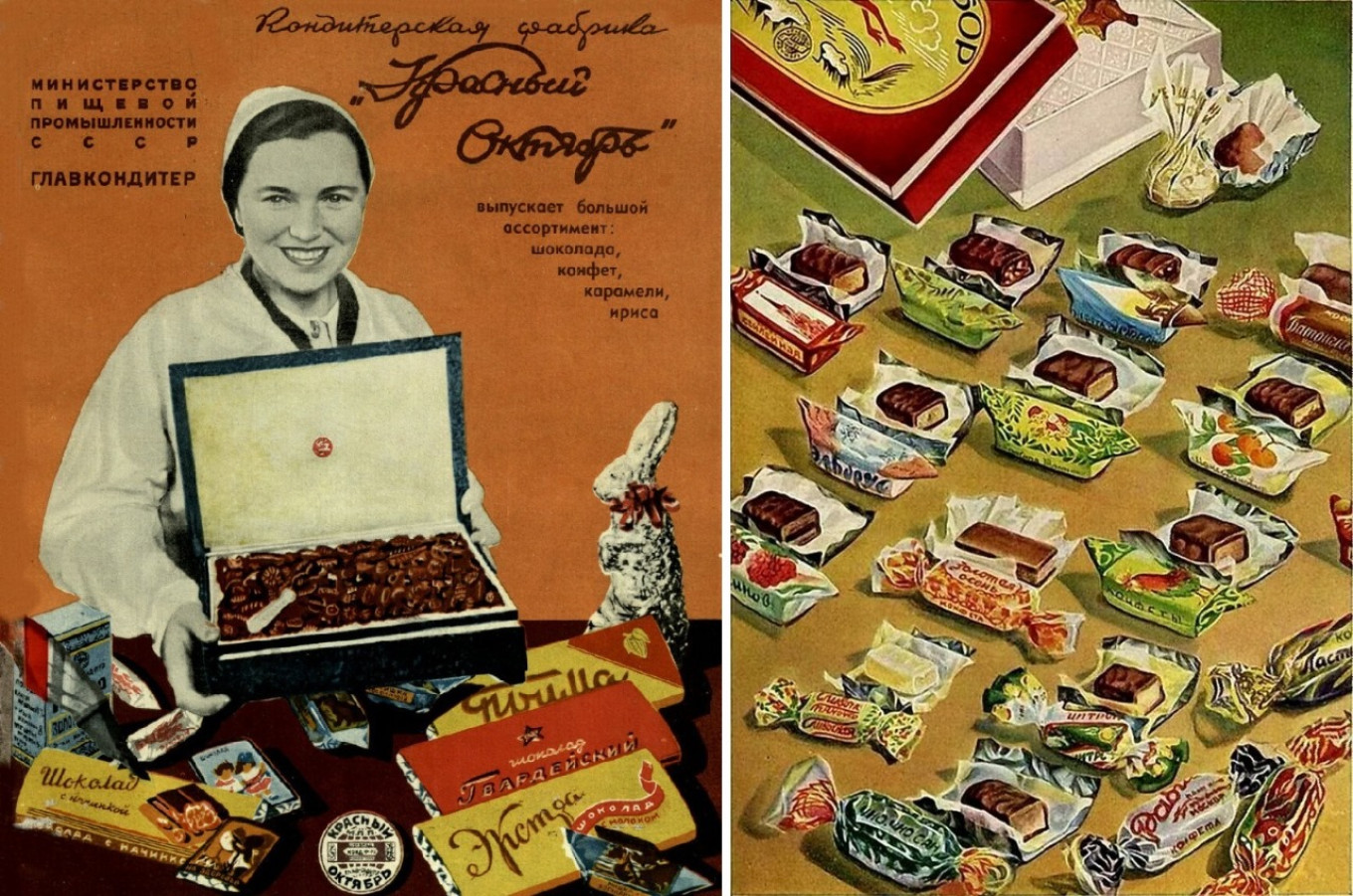
There was another confection that was similar, if not typical: chocolate covered gingerbread. This has been produced in Russia for at least 200 years, as testified by cookbooks published in the second half of the 19th century. Small gingerbreads were dipped in a pot of liquid chocolate, then dried on colling racks. Here’s a recipe from Natalia Petrovskaya's book “Cooking Gingerbread” (St. Petersburg, 1911):
Roll the gingerbread dough into large balls, put on a greased baking sheet and put into the oven. Then boil sugar in a pot; when it becomes a syrup add grated chocolate, stir until it is incorporated, scrape down sides of the pot, drop gingerbreads into the chocolate, stir gently and then spoon the chocolate-covered biscuits out of the pot, place on wire rack until dry.
When making large gingerbread, the technology was somewhat more complicated. After baking, they were coated with liquid chocolate on one side. Then they were dried in an oven, turned over and the other side was coated with chocolate.
These chocolate-covered gingerbread bars would seem to meet the main requirements for today's chocolate bars. They are delicious, high in calories, and easy to eat on the go. It’s a shame that they have become one of the “forgotten victories” of Russian cuisine. But nothing prevents us from making this ancient recipe.
Chocolate Covered Honey-Chocolate Gingerbread
The main ingredient that makes gingerbread gingerbread is honey. The cocoa gives a light chocolate flavor that when added to the classic gingerbread spices makes these sweets unique. They are easy to make at home and will taste almost exactly like the gingerbread bars made 200 years ago.
To make them special, dip the finished gingerbreads in chocolate glaze.
Ingredients
For the dough:
- 100 g (3.5 oz or ¼ c) honey
- 2 eggs
- 20 g (3/4 oz or 1 ½ Tbsp) butter
- 30 g (1 oz or 2 Tbsp) cocoa powder
- 380 g (13.5 oz or 3 ¼ c) flour
- ½ tsp baking soda
- 1/2 tsp cinnamon
- Small pinch of nutmeg and dry ginger powder
For the glaze:
- 100 g (3.5 oz or ½ c) sugar
- 50 g (1 ¾ oz or ¼ c) water
- 2 tsp cocoa
Instructions
- Put honey, eggs, butter cut into small pieces, spices and baking soda in a saucepan. Stir with a whisk and place over medium heat.
- Bring just to a boil (about 75°C /165°F) stirring constantly.
- Remove from heat and cool slightly.
- Mix the cocoa with the sugar and add to the saucepan. Stir until sugar is dissolved.
- Add the flour in batches and knead into an elastic dough. Place in the refrigerator for 2 hours. Preheat the oven to 180°C /355°F.
- Form the gingerbread: Roll out the dough into a 1.5-2 cm (1/2-1 inch) thick layer. Use cookie cutters to make round or shaped cookies or cut rectangular bars about 2 -2.5 cm (1-1 ½ inch) wide and 10 cm (4 inches) long.
- Bake in the preheated oven for 13-15 minutes.
- Prepare the chocolate glaze: In a saucepan, mix the sugar and cocoa. Pour in the water, stir with a whisk and place on the heat.
- Stirring constantly to remove any lumps, bring to a boil, then reduce heat to low and simmer for 2 minutes. Remove from the heat and cool.
- Coat the warm honey-chocolate gingerbread with chocolate glaze either with a brush or by dipping the gingerbread into the glaze.
- Place on a rack to cool. The glaze will dry and become shiny.
These gingerbread bars are a great snack for kids — much better than storebought!
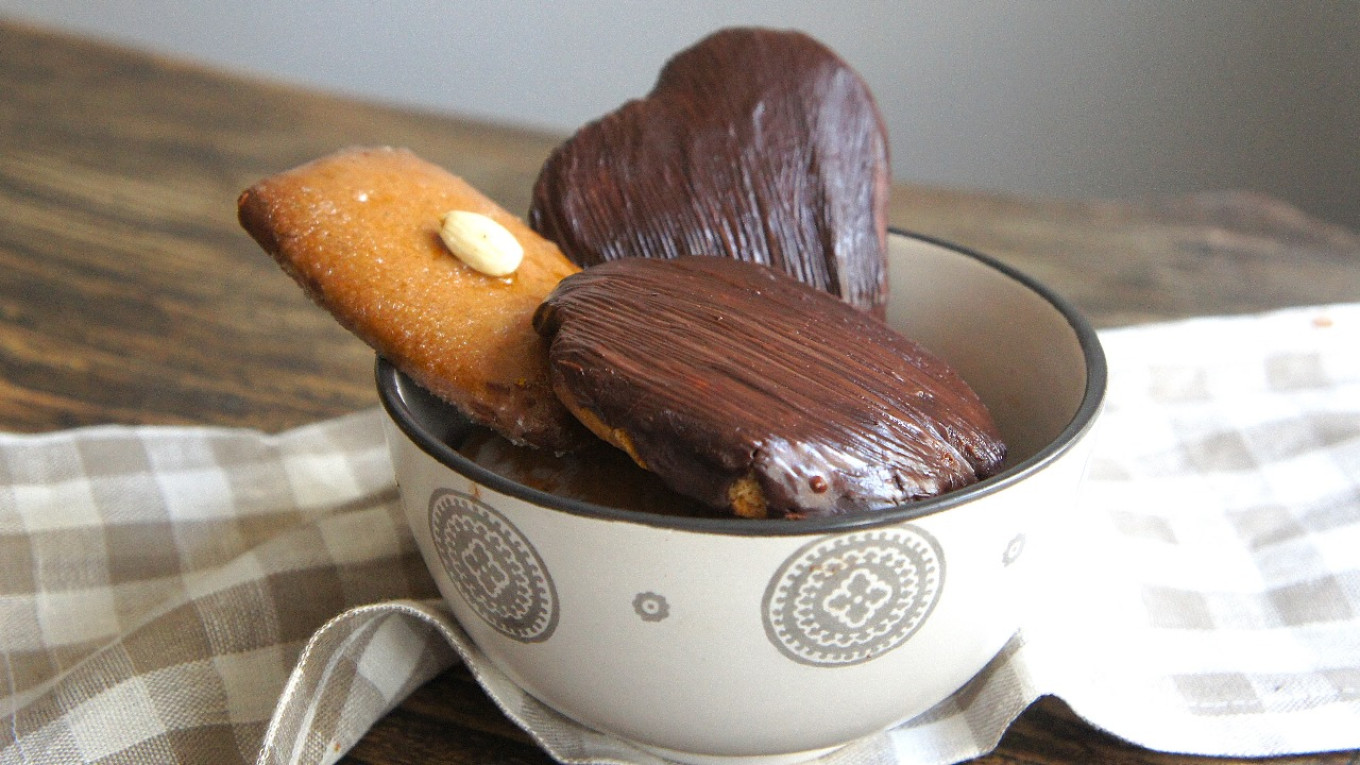
A Message from The Moscow Times:
Dear readers,
We are facing unprecedented challenges. Russia's Prosecutor General's Office has designated The Moscow Times as an "undesirable" organization, criminalizing our work and putting our staff at risk of prosecution. This follows our earlier unjust labeling as a "foreign agent."
These actions are direct attempts to silence independent journalism in Russia. The authorities claim our work "discredits the decisions of the Russian leadership." We see things differently: we strive to provide accurate, unbiased reporting on Russia.
We, the journalists of The Moscow Times, refuse to be silenced. But to continue our work, we need your help.
Your support, no matter how small, makes a world of difference. If you can, please support us monthly starting from just $2. It's quick to set up, and every contribution makes a significant impact.
By supporting The Moscow Times, you're defending open, independent journalism in the face of repression. Thank you for standing with us.
Remind me later.



